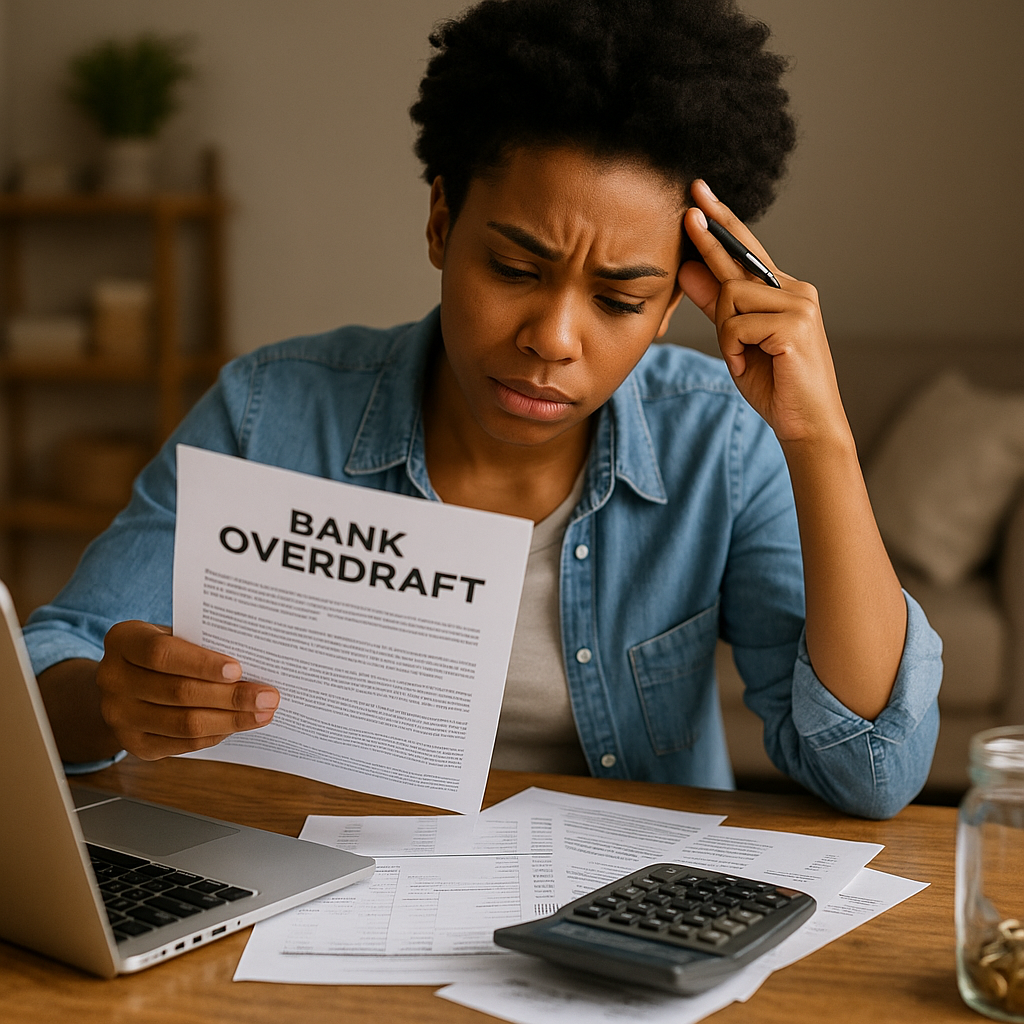Living in overdraft can feel like you’re constantly chasing your next paycheck just to break even. It’s stressful, expensive, and can keep you stuck in a cycle of debt. But the good news is: it’s possible to escape overdraft and regain financial stability—with a clear and realistic plan.
This article will guide you step-by-step on how to stop relying on overdraft protection and start building a stronger, more confident relationship with your money.
What Is Overdraft and Why Is It a Problem?
An overdraft happens when your bank account balance goes below zero, and the bank covers the difference. While this might seem helpful in the moment, banks typically charge:
- High overdraft fees (up to $35 per transaction)
- Daily fees if your account stays negative
- Interest or penalties, depending on your agreement
Over time, even small overdraft usage can lead to hundreds of dollars in extra charges.
Step 1: Stop the Bleeding – Turn Off Overdraft Protection
The first thing to do is prevent future overdrafts. Many banks allow you to disable overdraft protection entirely. This way, transactions will be declined instead of pulling you deeper into debt.
Action tip: Call your bank or check your online banking app to turn off overdraft coverage for debit card purchases and ATM withdrawals.
Step 2: Understand Your Overdraft Balance and Fees
Log in to your online banking account and write down:
- The current negative balance
- Any pending fees or interest charges
- The daily fees (if applicable)
- The cutoff date for repayment (if the bank has one)
Knowing exactly what you owe is the foundation of any repayment plan.
Step 3: Call Your Bank and Negotiate
Don’t be afraid to contact your bank and ask for help. If it’s your first overdraft or you’ve been a loyal customer, they may:
- Waive or reduce fees
- Set up a repayment plan
- Offer tips to prevent future overdrafts
Be honest and polite—many customer service reps have the authority to help you, especially if you act quickly.
Step 4: Create a Mini-Budget to Get Back to Zero
If your account is negative by $200, your first goal is to find that amount as fast as possible.
Cut all non-essential spending for the next few weeks. Focus on:
- Essentials only: rent, food, utilities
- Pausing subscriptions or memberships
- Delaying any unnecessary purchases
Use cash or a separate bank account (if possible) while you work to bring your main account back above zero.
Step 5: Increase Your Cash Flow (Temporarily)
The faster you repay your overdraft, the less you’ll pay in fees. Try adding short-term income to your plan:
- Sell unused items online
- Take a weekend gig (food delivery, dog walking, etc.)
- Offer services to friends or neighbors (like cleaning or tutoring)
Every little bit helps when you’re trying to get your account back in the green.
Step 6: Build a Buffer to Avoid Future Overdrafts
Once you’ve repaid your overdraft, don’t stop there. Your next goal is to create a cash cushion—a small amount of money that stays in your account to protect against unexpected charges.
Aim for a $100–$300 buffer at first. This acts as a safety net and reduces your reliance on overdraft protection.
Step 7: Use Alerts to Stay on Track
Most banking apps let you set up balance alerts or transaction notifications. These help you:
- Know when your account drops below a certain level
- Avoid surprise charges
- Track spending in real time
Set a low-balance alert at $50 or $100 to stay aware and act early.
Step 8: Switch to a No-Overdraft Account (If Needed)
If your current bank charges high fees or doesn’t offer good support, consider switching to a bank that offers:
- No overdraft fees
- Transparent account rules
- Tools for budgeting and alerts
Many online banks and credit unions now offer accounts that prevent overdraft entirely.
Step 9: Track Your Progress and Celebrate Small Wins
Every time you make a payment or go a week without overdrafting, take note. Celebrate your progress. These small wins build momentum and boost confidence.
Overcoming overdraft is not just about money—it’s about changing habits and mindsets.
Final Thoughts: Get Back in Control—One Step at a Time
Being stuck in overdraft doesn’t mean you’re bad with money—it just means you need a better system. With patience, discipline, and a clear plan, you can break free from the cycle and start fresh.
Take it step by step. Turn off overdraft protection, cut unnecessary spending, and prioritize repayment. Soon, you’ll be operating in the positive—without the fear of hidden fees and negative balances.


Sem comentários